The Illusionist in Dungeons and Dragons began with an article in the Strategic Review in the winter of 1975. Specifically it was discussed in Volume One, Number Four. The Illusionist was considered a sub-class of the magic user. The Illusionist class came with very limited magic items in which they could use. But they had their own new unique spells with the potential to be more dangerous than any of the other classes.
As the Illusionist was considered to be more of a trickster than a wizard they were required to have both Dexterity and Intelligence as their primary statistics.
Articles in the Dragon later elaborated on the class. These articles provided new spells, features, level information and also discussed the topic of illusion magic in general. Illusions provide a far different element to the responsibilities of the dungeon master. For some sort of determination of whether the illusions are effective is required. And not all of these rules are crystal clear for the dungeon master. Many a decision will need to be made on the fly as to what exactly can be created and what cannot.
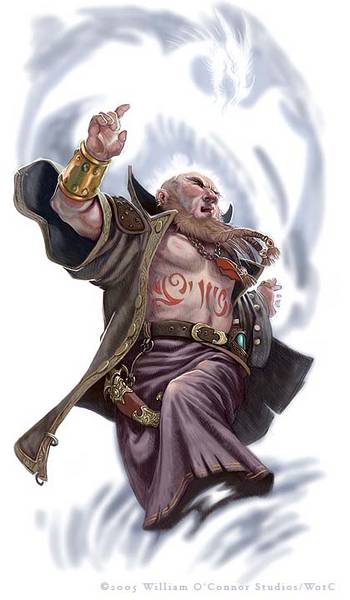
Illusionists in Dungeons and Dragons 1st Edition
Advanced Dungeons and Dragons made the Illusionist class one of the core classes that one could choose. The class had it’s own spell table which was a mixture of magic user spells with illusion elements to them and new spells which were specific to the Illusionist class. The requisite statistics were changed slightly. A 16 dexterity was required along with a 15 intelligence.
Like the earlier version of the Illusionist few magic items seemed to be available to the Illusionist. It was never made entirely clear whether the Illusionist could use items that other magic users could use. Advanced Dungeons and Dragons rules also specified which races could play the Illusionist class. The Gnome was the only non-human race that was allowed to play an Illusionist.
The Illusionist class had some incredibly powerful spells. But it also lacked many of the best direct damage type spells that a magic user could use at higher levels. But their ability to make others believe the reality of illusions was their most powerful ability.
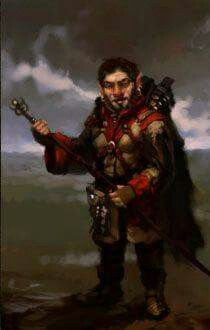
Illusionists in Dungeons and Dragons 2nd Edition
In 2nd edition Advanced Dungeons and Dragons the Illusionist was treated as a specialist class of magic user. Like 1st edition only a human or a gnome could play this class. The prime requisites were changed again. Dexterity was left at 16 but intelligence required was lowered to 9. Apparently it was an attempt to classify the Illusionist as more of a sleight of hand expert than a wizard.
The Complete Wizard Handbook further modified the Illusionist class for 2nd edition. It provided new class options.
Illusionists in Dungeons and Dragons 3rd Edition
In third edition the Illusionist is but one of the schools of magic that a wizard can study. There are certain schools of magic that the Illusionist in unable to learn spells from after choosing this field of study.
Illusionists in Dungeons and Dragons 4th Edition
In fourth edition the Illusionist is a sub-class of the mage. Mages can study from several different schools of magic but select one as their primary school. An Illusionist mage could have certain specific abilities that improved their ability to use illusions to their benefit.
Illusionists in Dungeons and Dragons 5th Edition
In fifth edition the Illusionist is but one choice for a wizard character to specialize in. All 5E wizards specialize after the 2nd level. Like all character classes in 5E the Illusionist specialist gains specific illusion abilities at different set levels as they progress.
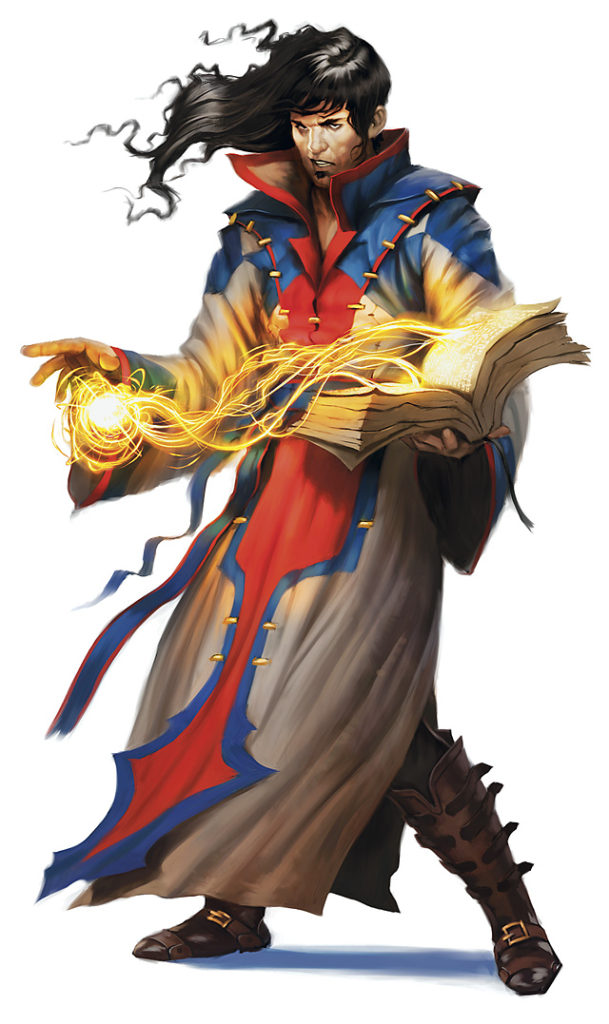
Phantasmal Force (s)
In the beginning……
Phantasmal forces was the original “illusion” spell in Dungeons and Dragons. It was the basic spell that all other illusionary spells derived from. In original Dungeons and Dragons it was called Phantasmal Force(s). As in plural. Later in 1st Edition AD&D it was changed slightly to be called Phantasmal Force. Later editions continued the 1st edition version.
This new spell allows the caster to create an illusion depicting “any object, or creature, or force.” This is a rather open ended statement. What is a force? How does one depict one? And does this mean one single “object, creature or force” or could it include more than one? None of these things are really made clear in the rules. Not even in later editions.
And another problem arises. When you read the descriptions in the various monster manuals (regardless of edition)….certain phrasing about creatures using illusions becomes apparent. Often it will state that a creature has the ability to create an illusion. Yet none of these descriptions ever state what spell that they are using. They give no indication as to the relative power or level of the spell used to create it. Are they using Phantasmal force to create these illusions? Or some other spell? One article that came out in the Dragon (Volume V, Number5) suggests that these monster illusions are the equivalent of phantasmal force with audible glamer because the wand of illusion introduced in 1st edition included these elements. This article is entitled Now you see it…but is it really there? Shedding light on illusions in AD&D by Philip Meyers. Obviously it was written with AD&D in mind but many of the concepts apply to illusions in other editions.
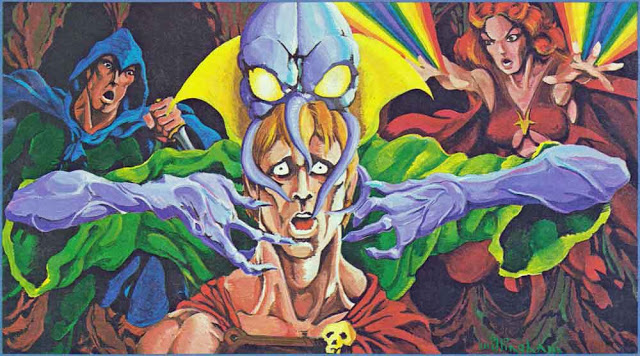
Belief is the Key
Regardless of the spell used to create an illusion one important element determines whether the creature (or character) are fooled by it. This element is belief. Or rather….disbelief. If one chooses to disbelieve that the illusion is real then they make a saving throw to determine if they successfully disbelieve it. Certain things might cause a creature or person to decide that something is wrong with what they are seeing or experiencing. Some possibilities that might suggest an illusion:
- The parties know that they are facing an illusionist
- What they are seeing or experiencing violates the viewer’s known experiences. Some examples might be seeing a dragon turtle on dry land, a salamander walking in a frozen wasteland or a dragon sitting in a tiny room.
- Something appears in a place where it was not previously just a few minutes before. The article gives the example of a pit appearing where one was not just a few minutes before
- Some situations are not impossible but are at least suspicious enough to create a little doubt. A monster appearing out of thin air is possible in the Dungeons and Dragons world. Monster summoning spells can bring this result. But it is also possible that a creature appearing so suddenly may be the result of an Illusion.
Obviously things one expects to find are going to be much more believable than things one does not expect. Adventurers finding a pit trap in a dungeon, for example, is something ordinary and expected. Finding an army of 10000 orcs facing you in the first room would not be expected (or likely believed).
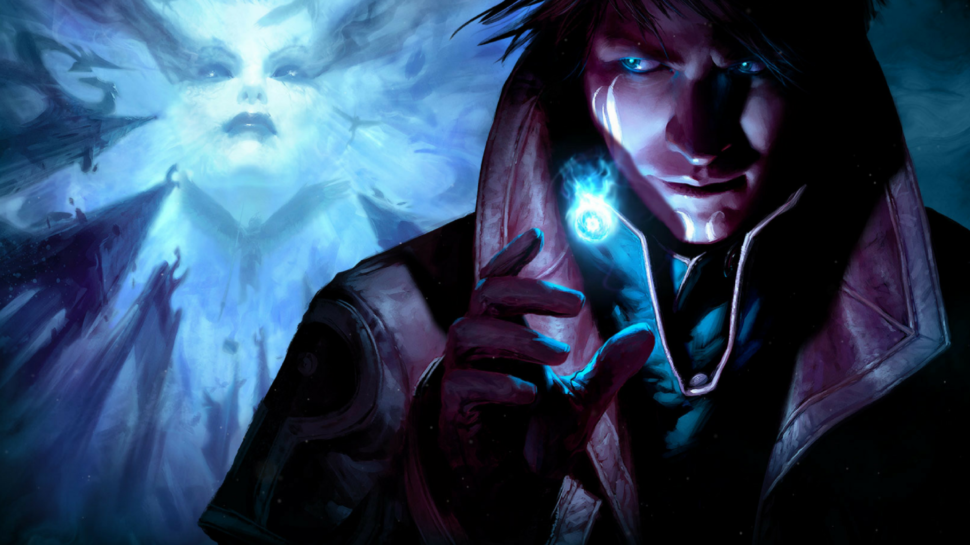
Further Examination of Belief
Let’s examine belief a little further. Clearly if an illusion is not believed then it is not going to be effective. But what makes a person, or being, believe an illusion? Some things to consider would include:
- Does the target have the ability to even see anything? If the target has no eyes then how could they visually see the image and be affected by it?
- Does the target have the intelligence to understand, and perhaps fear, the image that is being represented by the illusion? A carrion crawler seeing a fireball coming at it might have no real understanding that a fireball could kill it. So why would it be concerned about the image of one coming at it?
- Does the illusion match what the target expects the image to look like? If one casts an image of a red dragon, without ever having seen a red dragon before, then will the illusion of one look correct to the target viewing it? If the dragon does not look like a dragon should look like….the target will naturally tend to disbelieve it.
- Does the illusion SOUND like what the target expects it to? Phantasmal force, alone, produces no sounds. Other, higher level, illusionist spells do have audio and olfactory elements to them. Without those elements will the illusion be believable to the target? One could cast an audible glamer and then a phantasmal force to give it sound effects but this would require two spells rather than one.
- Personal experiences of the illusionist should play an important part of whether the image looks correct. One who has never seen a red dragon before is going to have a hard time making an illusion of one look right. One who has never seen a fireball before is going to have trouble making an illusion of one that is believable.
- Would the reality being represented by the image actually fit in the space where the illusion is cast? If the illusionist casts the image of an ancient red dragon in a room that is ten foot by ten foot would this be believable to anyone who sees it?
Ultimately if an illusion is disbelieved by a target that makes it’s saving throw then perhaps one of these reasons is the culprit. For someone to disbelieve an illusion there must be some differences in the illusion and the reality it is attempting to copy. These differences are what create the doubt that leads to total disbelief.
If a person touches, or strikes, an illusion and it does not react appropriately for such contact this also would cause one to disbelieve the reality of it. If an illusionist is still in control of the illusion then they could make the illusion react appropriately. But a programmed illusion or one that is continuing without illusionist control is going to be exposed when contact does not cause an appropriate reaction from the image.
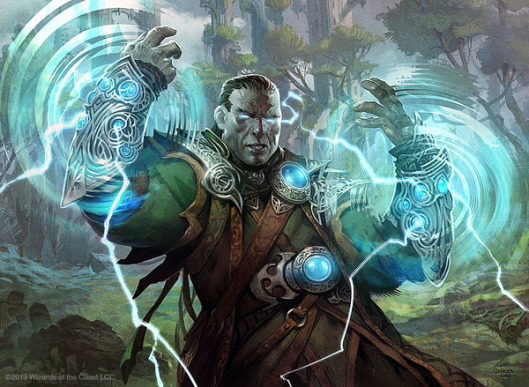
Is Phantasmal Force Too Powerful?
One basic problem with the phantasmal force (or forces) spells is that they are incredibly powerful and yet can be achieved very early in the career of an illusionist. An example given by the article mentioned is that a hill giant meets a 1st level illusionist and his party in a dungeon. This illusionist casts a phantasmal force spell and creates the image of a massive pit which the hill giant steps into and fails his saving throw. The giant dies. There is virtually no other possible way for a 1st level party to kill such a creature (short of incredible luck). Yet this spell, potentially, gives the illusionist a way to even at the earliest levels.
The spell allows the illusionist to cause damage to a creature that believes that the damage is real. The illusionist could easily have fooled the creature into falling off of a cliff or into walking straight into a blade storm or other hazard. Belief is the key. Or lack of belief.
Now in fifth edition phantasmal force is a second level spell. But the problem still remains. The spell is incredibly powerful. Obviously the way that a dungeon master adjudicates such illusions will make a significant impact on their power.
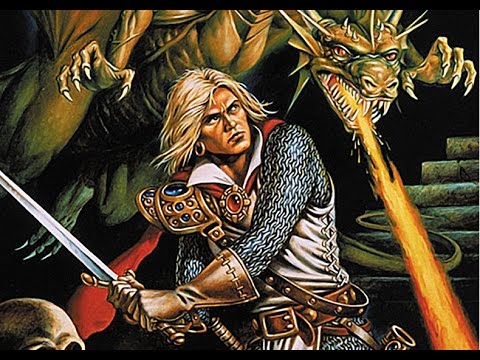
Certain Illusion Spells Related to Phantasmal Force
If we accept the proposition that all “illusionary spells” are derived from phantasmal force(s) then one might want to examine some of these derivative spells.
- Improved Phantasmal Force – This spell was created for 1st edition and no longer seems to exist in 5th edition. This spell allows the illusionist to create an illusion and then no longer concentrate on it while it continues for a couple of rounds after the illusionist has moved on to other things. It also has limited sounds effects.
- Spectral Force – This spell is also a 1st edition addition which does not seem to have a 5th edition equivalent. Sound, smell and thermal illusions are now included.
- Phantasmal Killer – Both 1st and 5th edition (and presumably all those in between) seem to include this spell. The effects of this spell are such that the viewer sees something to terrifying that they might just die on the spot. In fifth edition, however, the target would take 4D10 psychic damage rather than instantly dying.
- Permanent Illusion – This spell was a 1st edition addition and does not seem to exist in 5th. This spell is the equivalent of casting a spectral force and then no longer having to concentrate on it for it to continue. It is a fire and forget spell.
- Programmed Illusion – Both 1st and 5th include this spell. This spell allows the illusionist to create an illusion that will last for a certain amount of time and will be triggered by some condition or command.
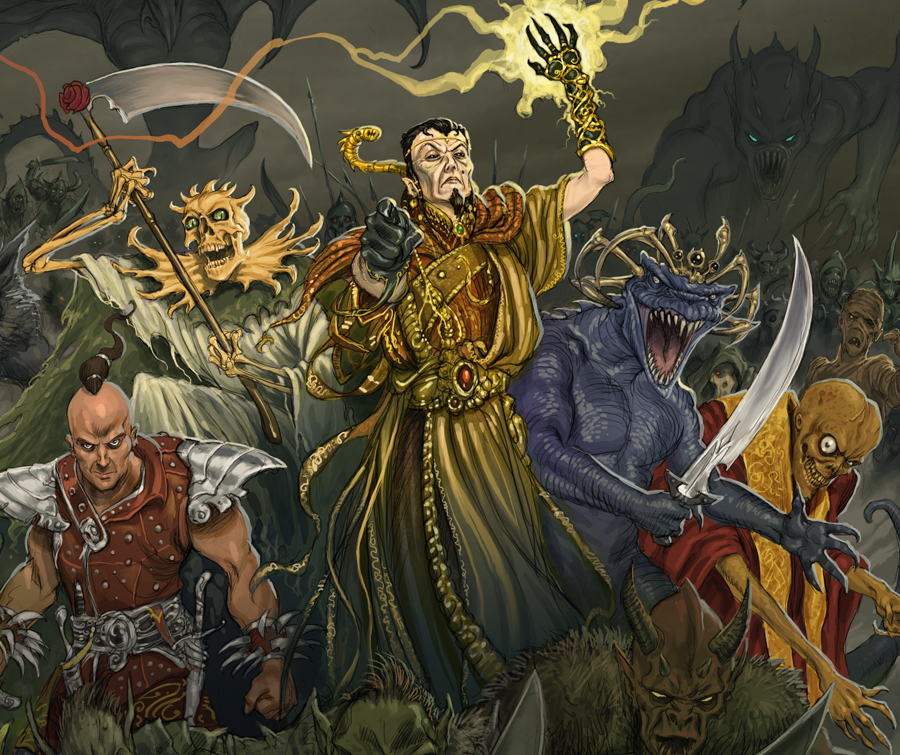
Causing Damage With Illusionary Magic
Say, for example, the illusionist casts an illusionary fireball at a target. The target fails it’s saving throw and takes damage from the attack it believes is successful. What damage should be rolled? Can a 1st level illusionist throw a 20th level fireball via a phantasmal force spell? This question was never really answered in the core books for Dungeons and Dragons but an article in the Dragon from February of 1988 discussed this subject and gave a logical answer to it. The article is entitled Hold on to your illusions! Keeping illusions (and illusionists) in balance.
A 1st level illusionist throwing an illusionary fireball would operate at the actual level of the spell caster. So a 1st level illusionist would be throwing a fireball at 1st level and would therefore do one dice of damage. One important point should be made, however, about illusions doing magical damage in this manner. An illusion can be repeated from round to round allowing the illusionist to keep throwing these illusionary fireballs. But this process is self limiting. The article goes on to suggest that an intelligent victim is going to keep getting a disbelief saving throw each round and sooner of later is going to make a save. It also goes on to mention that an illusionist can only imitate one single type of magical spell with an illusion. He must cast a second, different, illusion in order to imitate some other kind of effect.
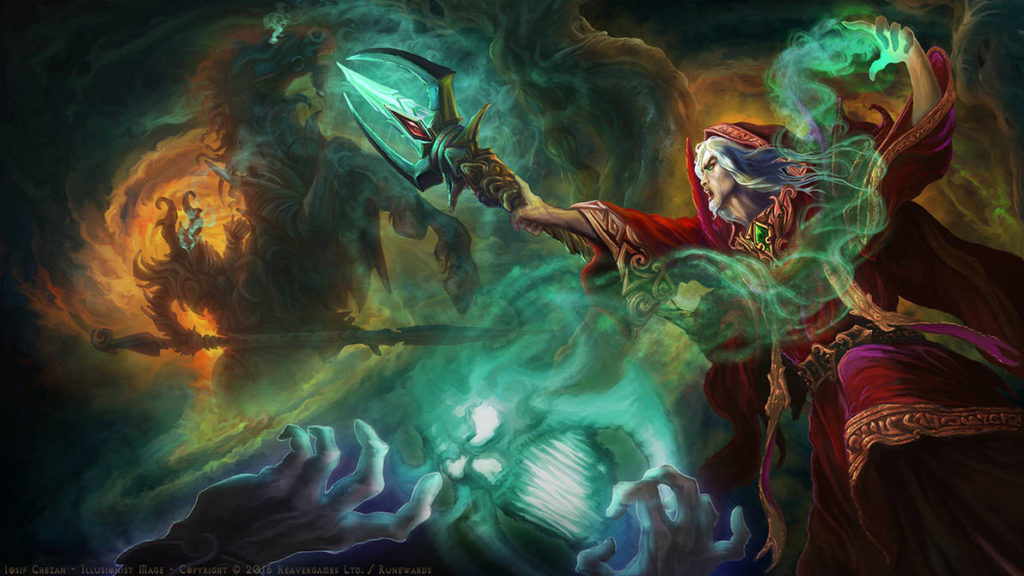
How many images or beings can be created by one illusion?
How many different creatures could an illusionist create with one illusion? Can a 1st level illusionist cast a phantasmal force and create an army of 10,000 orcs to fight for him? The Hold on you your illusions article discusses this as well. The answer is, of course, if it is believable. But there lies the rub. For the illusionist must control each and every one of the creatures that he has created. The limiting factor then is the number of levels of the illusionist. The article suggests that the illusionist can control (in a believable fashion) a number of hit dice equal to his or her own. Anything more than that is going to be progressively less believable. And therefore his targets are automatically going to see something that makes them disbelieve it. This chance to disbelieve will be for each round of combat. This is because as the illusion goes on it will become even more unbelievable to the target as they continue spotting things that cause them to doubt it’s reality.
If one disbelieves an illusion….can they help others in the party do the same?
If one can communicate this disbelief to others in the group in a timely manner then yes. Obviously if an illusionary fireball is about to hit the party there will be insufficient time to communicate that it is a fake. But perhaps before the second one is fired one could do so. But if the group comes upon the illusion of a sleeping ancient red dragon in a cave then certainly one would have the opportunity to warn the others that this image is not real.
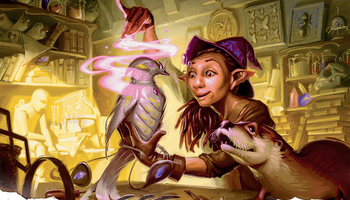
Can one heal with an illusion?
Several articles have discussed this issue. And the answer is no. Not in reality anyway. While the person receiving the illusionary healing might believe that they are feeling better they might still be bleeding out and dying. But if one has received illusionary damage from say a fireball illusion then surely they can be healed by an illusion of healing. But only to the extent of the illusionary damage. Physical damage still requires physical healing.
Bigger is not always better
The key to success….and even survival….as an illusionist is to fool one’s enemies. Casting an image of a red dragon might be more terrifying than an image of an angry gnoll but if the gnoll is believed and the red dragon is not….then which one is the better illusion? Which one is more effective? A bigger image is more likely to be flawed than a smaller one.
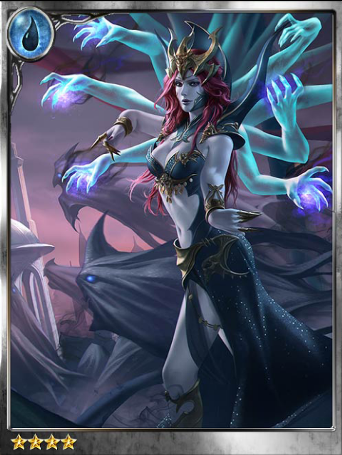
Ultimately illusions require the DM to make decisions they may not be totally comfortable with
The dungeon master must make some determinations when an illusion is used in the game. The dungeon master must decide if the image is believable or if it is somewhat believable or if it is not believable at all. The dungeon master may need to decide if the target will have a chance to disbelieve the illusion and if the saving throw should have bonuses modifying the roll. The articles in the Dragon give lots of suggestions on how to modify these rolls but each method suggested is different than the next.
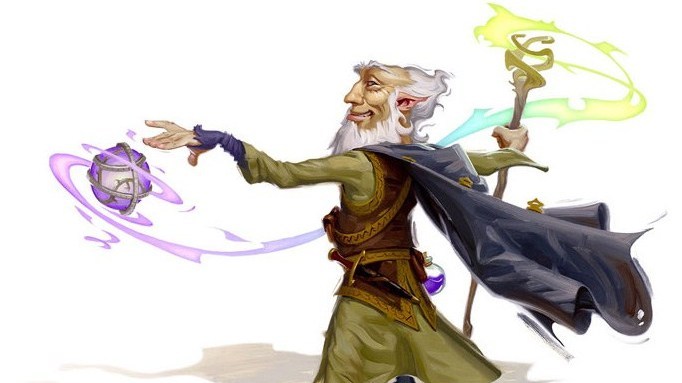
Who should make the saving throws for disbelief of an illusion?
Clearly there are going to be times that the DM will not want to know that something that the party is seeing is just an illusion. In these instances it must be the DM making the rolls secretly or the gig will be up. But if a player states his or her intent to disbelieve something then they might be allowed to make the roll.
How long does an illusion last after the illusionist stops concentrating on it?
In Advanced Dungeons and Dragons it lasted 3 more rounds. This gives an illusionist a distinct advantage over his or her enemies as they can cast the spell and then run away potentially. In 5th edition the duration is one minute after concentration has ended.
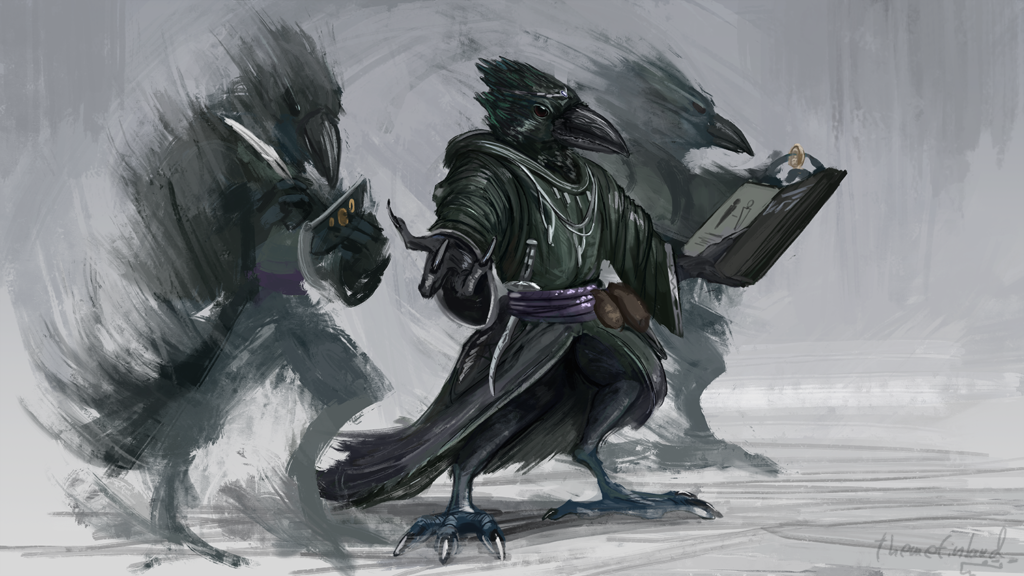
Illusionists in Dungeons and Dragons
When played properly this class can be an extremely powerful one. When a dungeon master does not play the illusion correctly then the NPCs and monsters will be at a severe disadvantage or the player illusionist will be. Ultimately if an illusionist is involved in your campaign you must give serious consideration to the illusions that are being cast and their effects on the other parties. You will have to decide how you are going to modify any potential saving throws should things come to that. And most of all…..you and your players need to have fun in the process.
Other Class Articles
If you enjoyed this article then perhaps you may enjoy some of the others in this series:
- Bards in Dungeons and Dragons
- Druids in Dungeons and Dragons
- Monks in Dungeons and Dragons
- Paladins in Dungeons and Dragons
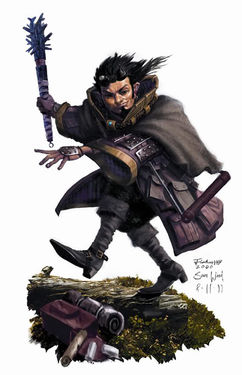



” In 5th edition the duration is one minute after concentration has ended.”
This is not correct. 5th Edition concentration spells last for a period of time equal to the duration or until you break concentration, whichever is shorter.
From the PHB:
Some spells require you to maintain concentration in order to keep their magic active. If you lose concentration, such a spell ends.
If a spell must be maintained with concentration, that fact appears in its Duration entry, and the spell specifies how long you can concentrate on it. You can end concentration at any time (no action required).
You are correct. I went back to read the wording of Phantasmal Force for 5th and it reads “Duration: Concentration, up to 1 minute”. I guess I misinterpreted that as being one minute after concentration ended. I would assume that it really means one minute or until you break concentration. This makes the 5th edition version considerably weaker than the 1st edition version which seems to last until concentration is broken. This would seem to indicate that the illusionist could keep the illusion going for as long as he or she wants in 1st edition.